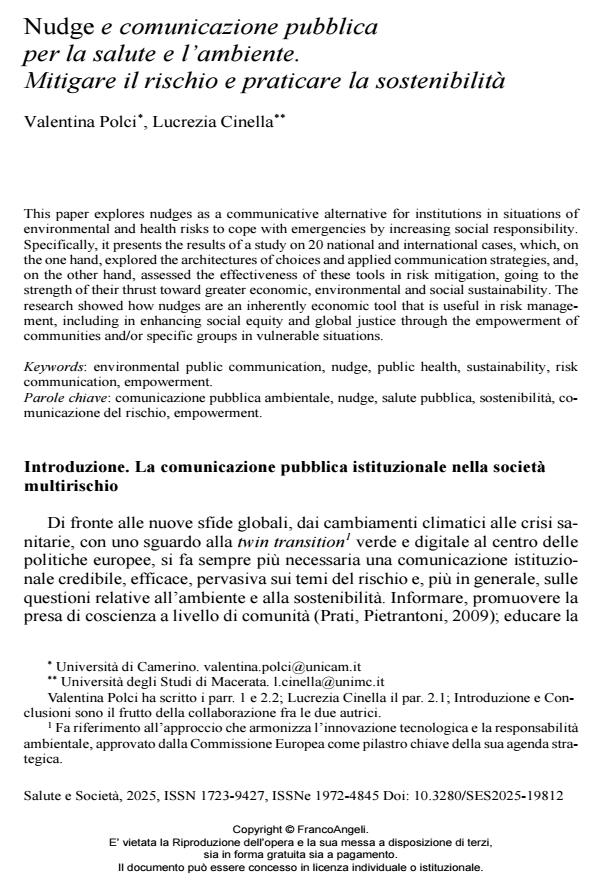Nudge e comunicazione pubblica per la salute e l’ambiente. Mitigare il rischio e praticare la sostenibilità
Journal title SALUTE E SOCIETÀ
Author/s Valentina Polci, Lucrezia Cinella
Online First 5/28/2025 Issue 2025/Online First
Language Italian Pages 15 P. 1-15 File size 264 KB
DOI 10.3280/SES2025-19812
DOI is like a bar code for intellectual property: to have more infomation
click here
Below, you can see the article first page
If you want to buy this article in PDF format, you can do it, following the instructions to buy download credits

FrancoAngeli is member of Publishers International Linking Association, Inc (PILA), a not-for-profit association which run the CrossRef service enabling links to and from online scholarly content.
This paper explores nudges as a communicative alternative for institutions in situations of environmental and health risks to cope with emergencies by increasing social responsibility. Specifically, it presents the results of a study on 20 national and international cases, which, on the one hand, explored the architectures of choices and applied communication strategies, and, on the other hand, assessed the effectiveness of these tools in risk mitigation, going to the strength of their thrust toward greater economic, environmental and social sustainability. The research showed how nudges are an inherently economic tool that is useful in risk manage-ment, including in enhancing social equity and global justice through the empowerment of communities and/or specific groups in vulnerable situations.
Keywords: environmental public communication, nudge, public health, sustainability, risk communication, empowerment.
- Integrating Urban Design, Healthy Habits, and Socio-Ecological Networks: A One Health and Well-Being Framework for Sustainable Cities Massimo Sargolini, Ana Sopina, Valentina Polci, David Mariani, Chiara Paolini, Maurizio Mariani, in Sustainability /2025 pp.10014
DOI: 10.3390/su172210014
Valentina Polci, Lucrezia Cinella, Nudge e comunicazione pubblica per la salute e l’ambiente. Mitigare il rischio e praticare la sostenibilità in "SALUTE E SOCIETÀ" Online First/2025, pp 1-15, DOI: 10.3280/SES2025-19812